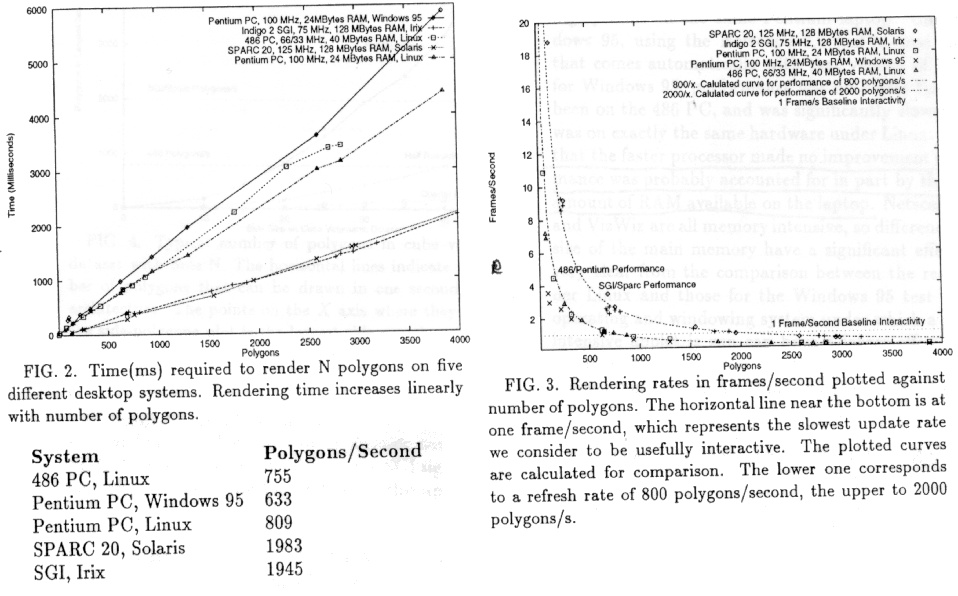
2.1. "VizWiz: A Java Applet for Interactive 3D Scientific Visualization on the Web", Michaels C. and Bailey M., in the Proceedings of Visualization'97, IEEE. An online prototype of the system can be found at VizWiz.
This paper describes a web-based visualization system implemented as JAVA Applet. The system is capable of handling serveral of the visualization techniques, namely Isosurfacce, cutting planes and elevation plots for 2 D and 3D datasets. users of the applet can also load these datasets to the server to a web server via a web browser. Within this paper, an evaluation study of the applet's performance on various platforms is also presented. Rather than showing exactly how the system would perform on those platforms, the author tried to give the audience a general idea of how the hardware configuration would affect the performance of the system indeed. The evaluation somehow proves that processor power has little impact on the performance while physical memory is the key.

Some key system features are concluded
(1) Platform independen (maybe) but it definatly has the ability
to work across the heterougenous Internet environement (i.e. the internet).
(2) High performance, in terms of the response time for high
volume data (using a smart caching mechanism).
(3) Ease of use, no additional time required for the system
during the initial setup stage for the users as the applet is downloaded
and run automatically through the
web browser.
(4) Certain level of Interactivity in terms of 'resolution control'
(through a smart caching mechanism).
Some Tricks
- Continues vs Flat shading Model:Since
JAVA AWT API doesn't support continues polygon shading and it'd be computational
expensive to construct
images of shaded polygons
(pixel by pixel), Flat shading is implemented for the polygons in a low
resolution as less polygons will be generated and hence
quicker the response time.
- 'Hard' and 'Soft' update of the polygons
display using Matrix3D matrix transformation (SUN): a combination of both
techniques is implemented to further
ensure a quick response
time. 'Soft' updatetakes place most of the time while 'hard' update will
only happen when the actual display of the polygons have been
changed during a session.
- Marching Cubes Simplification: The
conventional Marching Cubes algorithm is simplified in order to increase
the performance of polygons renderring. The
system directly draws ploygons
instead of renderring non-triangular cube slices.
- Resolution Control: Users have the
freedom to control the surface resolution whnever found necessary while
most of the sufaces (polygons) are rendered at
half resolution only (by
default). This has improved the performance and increased the response
time significantly.
- Caching: This approach is to calculate
the isosurface only once and store it in a cache for future use. Whenever
an object is being calculated for the first time,
the result is stored in
a cache. There are caching for 'Cutting Planes' and 'Isosurface'. the caching
mechanism is pretty much limited to the availability of the
memory of a JAVA runtime
environment. As a matter of fact, the VizWiz has to restart itself whenever
it runs out of memory.
2.2. "Self-Organizing Map in Virtual Light", Juha Vesanto, diploma project.
This paper presents a system using a SOM (self-orgainized map) Unsupervised
Artificial Neural Network approach to construct the mapping of high dimentional
data sets. The network is implemented through Mathlab and the mathlab output
is sent to for visualization. The visualization part is done through VRML.
This implementation shows abstract presentation of complex high dimensional
data in a 2D geometric relationship on a low end display.
